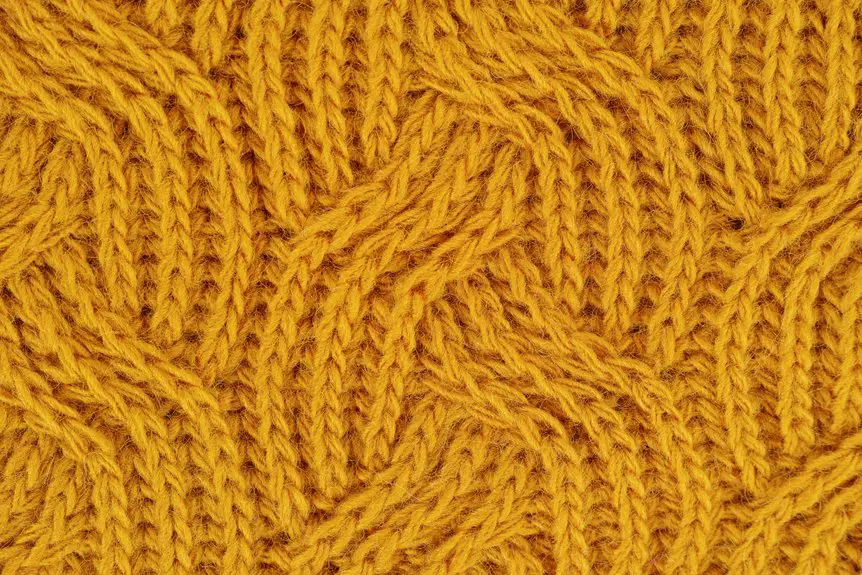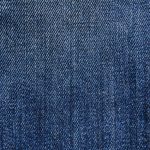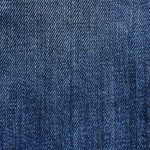You’ll find scuba knit fabric a smooth, thick material made from polyester and spandex, giving it stretch and durability. It’s lighter and softer than neoprene but keeps its shape well, making it perfect for sleek, modern clothing like dresses and activewear. Scuba knit resists wrinkles and feels comfortable against your skin, blending structure with flexibility. If you want to explore how it’s used in fashion and how to care for it, there’s plenty more to discover.
Table of Contents
Key Takeaways
- Scuba knit fabric is a smooth, thick double-knit textile made of polyester and spandex for durability and stretch.
- It has a dense yet soft texture that retains shape and resists wrinkles for a polished look.
- Unlike neoprene, scuba knit is lightweight, breathable, and more flexible, ideal for fashion rather than insulation.
- Commonly used in bodycon dresses, jackets, activewear, and structured accessories due to its modern, sleek appearance.
- Care involves cold water washing, gentle cycles, and air drying to maintain fabric structure and longevity.
Definition and Composition of Scuba Knit Fabric
Scuba knit fabric is a smooth, thick material often used in fashion and activewear. When you work with it, you’ll notice it’s a double-knit textile, meaning it has two layers of fabric knitted together. This structure gives scuba fabric its signature thickness and stretch.
It’s typically made from a blend of polyester and spandex, which makes it both durable and flexible. You’ll find that the polyester provides strength and resistance to wrinkles, while the spandex adds elasticity, allowing the fabric to move with you.
Unlike traditional neoprene, scuba knit fabric is lighter and softer, making it more comfortable for everyday wear. Its composition guarantees it holds its shape well, so your garments look polished without extra bulk.
Key Characteristics and Texture
You’ll notice scuba knit fabric has a smooth, dense texture that feels substantial yet soft to the touch.
Its thickness gives it a nice weight, making it hold its shape well.
Plus, it stretches easily and bounces back quickly, ensuring comfort and durability.
Smooth and Dense Texture
The smooth and dense texture of this fabric gives it a luxurious feel that stands out in both fashion and function. When you touch scuba knit, you’ll notice how seamlessly soft yet structured it feels. This texture allows the fabric to hold its shape well, making your garments look polished without extra effort. Its dense weave also means it resists wrinkles and maintains a clean appearance throughout the day. You’ll appreciate how this texture enhances both comfort and style, whether you’re wearing a sleek dress or a sporty jacket.
| Feature | Benefit |
|---|---|
| Smooth surface | Comfortable against skin |
| Dense knit | Shape retention |
| Soft feel | Luxurious touch |
| Wrinkle resistance | Maintains neat look |
| Uniform texture | Modern, clean aesthetic |
Thickness and Weight
Beyond its smooth and dense texture, thickness and weight play a big role in defining this fabric’s unique character.
When you handle scuba knit fabric, you’ll notice it feels substantial without being overly heavy. Its medium to heavy weight gives it structure and body, making it perfect for garments that need shape, like dresses and jackets.
The thickness also provides insulation, keeping you comfortably warm in cooler weather. Despite this heft, the fabric remains flexible, so it won’t feel bulky or restrictive.
You’ll appreciate how the weight allows the fabric to drape elegantly, maintaining clean lines and a polished appearance.
This balance of thickness and weight makes scuba knit both practical and stylish for a variety of uses.
Stretch and Recovery
Because scuba knit fabric stretches effortlessly, it offers remarkable comfort and flexibility for everyday wear. When you move, this fabric adapts to your body’s shape without feeling restrictive.
Its excellent stretch comes from a blend of fibers like polyester and spandex, giving it that smooth, elastic feel. What really sets scuba knit apart is its impressive recovery; once stretched, it quickly bounces back to its original form without sagging or losing shape.
This means your clothes maintain a sharp, polished look even after hours of wear. Whether you’re bending, sitting, or stretching, scuba knit supports your movements and holds its structure.
You’ll appreciate how this fabric balances softness with resilience, making it ideal for form-fitting garments that move with you.
Differences Between Scuba Knit and Neoprene
You’ll notice scuba knit and neoprene differ in material composition, which affects their texture and flexibility.
Understanding these differences helps you choose the right fabric for your project.
Let’s explore how each fabric’s typical uses and applications vary.
Material Composition Comparison
Although scuba knit and neoprene share similar names and some characteristics, their material compositions differ markedly, affecting their texture, flexibility, and durability.
Scuba knit is a double-knit fabric primarily made from polyester and spandex, giving it a smooth surface and a comfortable stretch.
On the other hand, neoprene is a synthetic rubber composed of chloroprene, often lined with fabric for added comfort. This rubber base makes neoprene denser and more water-resistant than scuba knit.
When you choose between the two, keep in mind that scuba knit’s blend offers lightweight breathability, while neoprene’s rubber composition prioritizes insulation and resistance to elements.
Understanding these material differences helps you pick the right fabric for your project or garment needs.
Texture and Flexibility Differences
When you handle scuba knit and neoprene, you’ll notice their textures and flexibility differ greatly.
Scuba knit feels smoother and softer against your skin, thanks to its double-knit construction, which gives it a slight stretch without being too rigid. In contrast, neoprene has a denser, spongier texture that feels thicker and more cushioned.
When you bend scuba knit, it moves fluidly, offering more stretch and flexibility, making it easier to work with for form-fitting garments. Neoprene, however, resists bending a bit more, holding its shape firmly due to its foam core.
This firmness provides sturdiness but limits its stretch. So, if you want a fabric that’s soft and flexible yet structured, scuba knit is your best bet, while neoprene suits needs requiring more rigidity.
Typical Uses and Applications
Because scuba knit offers more stretch and softness, it’s often chosen for trendy, form-fitting apparel like dresses, skirts, and activewear. You’ll find it great for garments that require both comfort and shape retention.
In contrast, neoprene’s heavier, denser structure suits more protective and performance-focused uses, such as wetsuits, laptop sleeves, and orthopedic braces. If you want a fabric that feels lightweight yet structured, scuba knit fits perfectly in fashion and casual wear.
Meanwhile, neoprene excels where durability and insulation are key. So, when deciding between the two, consider scuba knit for stylish, flexible clothing and neoprene for gear demanding sturdiness and water resistance.
Understanding these differences helps you pick the right fabric for your project’s purpose without compromising function or style.
Common Uses in Fashion and Design
Since scuba knit fabric combines stretch and structure, designers often choose it for creating sleek, modern silhouettes that hold their shape well.
When you wear scuba knit, you’ll notice how it sculpts bodycon dresses, skirts, and jackets, giving you a polished, contemporary look. It’s also a favorite for activewear and athleisure, thanks to its flexibility and smooth finish.
You’ll find scuba knit in statement pieces like peplum tops and tailored blazers, where its thickness adds volume without bulk. Accessories like structured bags and hats often use it, too, because it molds easily.
If you want garments that look sharp and feel comfortable, scuba knit is a versatile fabric that meets both needs in fashion and design.
Benefits of Using Scuba Knit Fabric
Scuba knit fabric offers a unique blend of comfort and durability that you’ll appreciate in any garment. It feels soft against your skin while maintaining a firm structure, so your clothes hold their shape without feeling stiff.
You’ll enjoy its excellent stretch, which moves with you, making it perfect for activewear or fitted designs. Plus, it resists wrinkles and creases, keeping your outfit looking fresh throughout the day.
The fabric’s thickness also provides insulation, so you stay warm without bulky layers. Additionally, scuba knit is easy to dye, giving you vibrant colors that won’t fade quickly.
When you choose scuba knit, you’re opting for a versatile, long-lasting material that supports both style and comfort effortlessly.
Care and Maintenance Tips for Scuba Knit
Taking proper care of scuba knit fabric guarantees your garments stay looking fresh and retain their shape over time.
To keep your scuba knit in top condition, follow these simple tips. First, always wash it in cold water using a gentle cycle to prevent fabric damage.
To preserve your scuba knit, wash it gently in cold water to avoid damage and maintain quality.
Second, avoid using bleach or harsh detergents, as they can weaken the fibers and fade colors.
Third, air dry your scuba knit pieces flat to maintain their structure and avoid stretching caused by hanging or using a dryer.
Styling Ideas and Popular Garment Types
When you want a fabric that combines comfort with a sleek, modern look, scuba knit offers versatile options for your wardrobe. You’ll find it popular in structured dresses, skirts, and tailored jackets that hold their shape beautifully.
Its smooth texture and slight stretch make it ideal for body-hugging dresses or stylish jumpsuits, giving you a polished appearance without sacrificing comfort.
Pair a scuba knit skirt with a casual top for effortless chic or wear a scuba knit jacket over jeans for a smart-casual vibe. You can also experiment with bold colors or textured scuba blends to create statement pieces.
Whether dressing up or down, scuba knit’s durability and style let you create looks that work from day to night seamlessly.
Frequently Asked Questions
Is Scuba Knit Fabric Environmentally Friendly or Sustainable?
Back in the roaring twenties, you’d wonder if scuba knit fabric’s sustainable; today, it’s tricky. You see, it’s mostly synthetic, so it isn’t eco-friendly by default, but some brands use recycled fibers to help you stay green.
Can Scuba Knit Fabric Be Used for Swimwear?
You can use scuba knit fabric for swimwear because it’s stretchy, durable, and water-resistant. It holds its shape well, offers good support, and dries relatively quickly, making it a popular choice for stylish, comfortable swimsuits.
How Does Scuba Knit Fabric Perform in Extreme Weather Conditions?
If you’re planning to survive an Arctic blizzard or Sahara heatwave in scuba knit, good luck! It handles mild cold and warmth okay, but extreme weather will remind you it’s not a superhero fabric—dress accordingly!
Is Scuba Knit Fabric Suitable for Upholstery or Furniture?
You can use scuba knit fabric for upholstery, but it’s not the best choice for heavy wear or long-term durability. It’s stretchy and smooth but might not withstand frequent friction or heavy use in furniture.
Are There Any Health Concerns With Wearing Scuba Knit Fabric?
Imagine wearing a shield that breathes—scuba knit fabric acts like that for your skin. You won’t face health risks if you avoid overheating or allergies; just stay mindful of comfort and breathability during wear.
- Does Chiffon Fabric Stink - July 15, 2025
- Does Chiffon Fabric Affect the Economy - July 15, 2025
- Does Cotton Fabric Have a Nap - July 15, 2025







